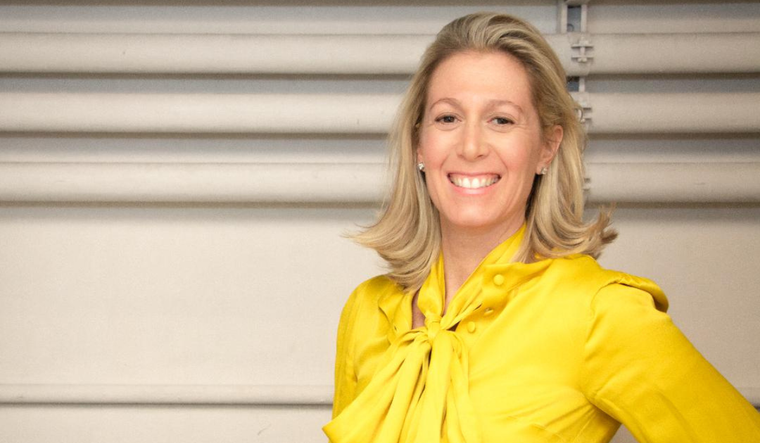Setting Better Boundaries Is the Best Way to Feel Like You Have More Time This Holiday Season. These 3 Steps Will Help You Get Started
In certain circles, I am known as the “Boundary Lady.”
To be fair, I am known as many things. I am a CEO, a wife, and a mother. I am a bestselling author, an avid hiker, and a voracious reader. But when it comes to boundaries, specifically, many of my readers’ spouses know me only as “that boundary lady on Instagram.”
If you were to look at me today, this label would make total sense. Personality-wise, let’s just say I am not a people pleaser. To even the casual observer, I appear assertive, independent, and self-confident; both comfortable with conflict and direct about expressing my needs. That behavior, especially coming from a woman, sometimes evokes an accusation of selfishness, and a few others I won’t mention here, but you can probably imagine what they are.
I’m not selfish, though, or any of those other descriptions you just envisioned. What I am is someone who takes her mental health, energetic capacity, and worth seriously, and does what needs to be done to protect them.
In business, this can look like: “Thank you for thinking of me. This project doesn’t feel like a good fit, so I’m going to pass.”
With my parents: “I know you’re trying to help, but it’s my job to make the rules for my son. I’ll let you know if I want your input.”
In friendships: “Oh, let me stop you—please don’t share stories about what my ex is up to. I really don’t want to hear about it.”
With my husband: “I could use some alone time, so I’m going into the other room to read.”
Reading these statements may make you uncomfortable, but they’re all firmly in my wheelhouse, and I use them often as a means of strengthening my relationships, bolstering my energy, and preserving my mental health. And I don’t apologize for setting these kinds of limits, because when I’m expressing my needs in a direct and polite manner, there is nothing to apologize for.
I am also the co-founder of the Whole30 program, which means I’ve led millions of people through successful habit change and dramatic transformations. You say no a lot when you’re on the Whole30, and many people find that idea daunting at best. For the last thirteen years, I’ve taught my community how to set boundaries around their health and habits, and how to deal with pushback and peer pressure. (Are you ready to embrace “no thank you” as a complete sentence? We’ll get there.)
Once people realized I was good at helping them say no to pizza and wine, they started asking me how to say no to their pushy co-worker, toxic mother-in-law, and nosy neighbor. I was getting so many questions from people about how to set boundaries that I did a deep dive into all the boundary-related work I could find. I read every book, article, and research paper I could dig up from therapists, psychiatrists, sociologists, addiction specialists, medical doctors, and business leaders, in a quest to discover what makes good boundaries and how they’re established.
Through that research, my own self-work, and listening to the needs of my community, I developed my own methodology and language around boundary-setting. And I’m on a mission to help others see the life-changing power of learning how to set boundaries in all areas of your life. Not sure where to start? These three steps will help.
Step No. 1: Identify the need for a boundary. Think about people, conversation topics, or times of day that provoke a sense of anxiety, dread, resentment, or avoidance. That’s a sure red flag that a boundary is needed.
Step No. 2: Set the boundary using clear, kind words. Practice as often as needed until it feels natural and confident. It might sound something like, “Please call before you come over,” or “No thanks, I’m not drinking right now,” or “Please don’t comment on what’s on my plate.”
Step No. 3: Hold the boundary. A boundary can’t tell other people what to do—you have to be prepared to hold it if someone else proves unable or unwilling to respect it. This may look like not answering the door if it’s not a good time, moving onto another conversation partner, or excusing yourself from the table.
I wear my “Boundary Lady” badge with pride, especially knowing how far I’ve come to earn it. I wasn’t always great at setting boundaries. I learned how to do it. And if I did, you can, too.
Adapted from The Book of Boundaries: End Resentment, Burnout, and Anxiety—and Reclaim Your Time, Energy, Health, and Relationships by Melissa Urban. Copyright © 2022 by Melissa Urban. Excerpted by permission of The Dial Press, an imprint of Penguin Random House LLC. All rights reserved. No part of this excerpt may be reproduced or reprinted without permission in writing from the publisher. You can order The Book of Boundaries here.
Melissa Urban is CEO of the Whole30 and an authority on helping people create lifelong healthy habits. She is a six-time New York Times bestselling author (including the #1 bestseller The Whole30); and has been featured by Dr. Oz, Good Morning America, The New York Times, The Wall Street Journal, Forbes, and CNBC. She lives with her husband, son, and a poodle named Henry in Salt Lake City, Utah.
Question from the Editor: How do you set healthy boundaries? And what are some of the ways you've experienced the benefits of boundary-setting?
Please note that we may receive affiliate commissions from the sales of linked products.



